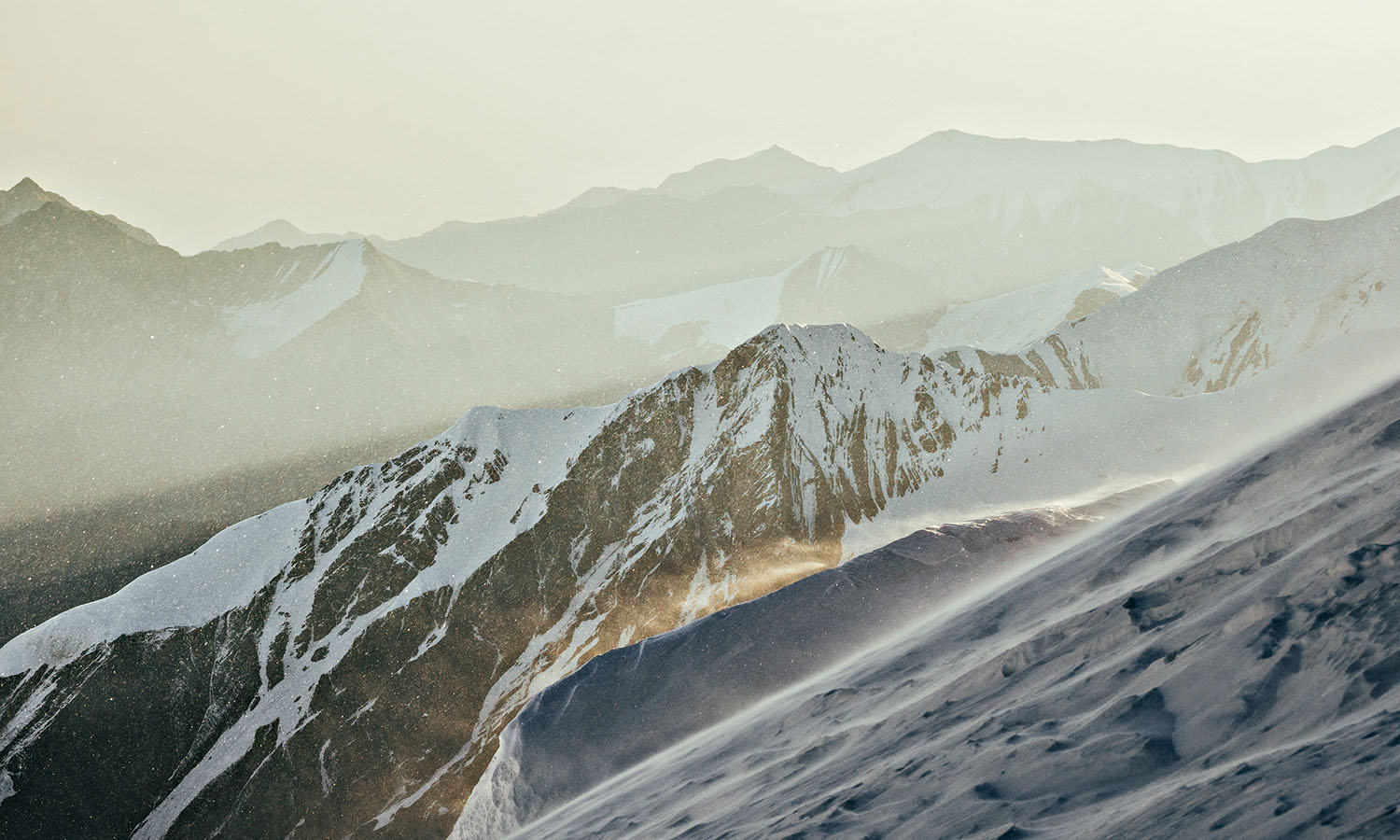World
World
Extreme Conditions
This is not an ideal shooting scenario, but at that exact moment a beautiful alignment took place. As the sun started to glow on the horizon, a horizontal blast of snow and ice shimmered in the golden light and the struggle of my friend in the distance formed the scene.
I had to shoot this! I couldn’t feel my face and retrieving my camera from the depths of my bag took virtually all my concentration. Somehow, despite the elements raging around me, I managed to remove my outer gloves and capture some of my favourite shots of 2017.
These aren’t your every day shooting conditions, but sometimes the destinations we seek out dish up elements that are extreme and you have to be prepared. Here are some tips to improve your chances of capturing great shots in the face of Mother Nature’s whims.
More Than Just Gear
An adventure to an extreme environment is a full body experience and even the best camera is no use if you don’t function. Being prepared is half the job. Do your research – find out everything about your destination and prepare both mentally and physically for the environment you will be travelling to.
I never thought I’d be the source of the problem when it came to taking photos in high altitudes. My main concern was the wellbeing of the camera, until I realised that wasn’t much help when I could only use it for 15 seconds at a time because, beyond that, I started to lose feeling in my fingers.


Bring The Right Camera
Your body is prepped, protected and all ready to go. Now what? Make sure you pack the right camera. Regardless of whether you’re shooting in the African heat, Scottish rain or Arctic cold, you’re going to need a camera and lens combination that is fully weather sealed.
These are only impervious to the climes when attached together. Don’t remove the lens from the camera when you’re among the elements or shortly after being exposed to them – you don’t want to risk moisture creeping in and destroying the electronics. For advanced weatherproof performance I recommend the Olympus OM-D E-M1 Mark II camera and M.Zuiko PRO lenses, which are dust- and splash-proof.


Pack Smart, Pack Light
Venturing to a destination of extremes likely means being active and every additional kilo you carry will feel heavier the further you travel, so pack with practicality in mind. For the most extreme adventures I recommend packing one single lens per camera body. The OM-D E-M1 Mark II has a small and light body and my favourite expedition lens, the M.Zuiko 12-100mm f/4 IS PRO, is not only weather sealed, it’s also small and portable and has a great focal range.
Other gear that’s worth its weight is spare batteries and hand warmers. The only thing that sucks the life out of a camera battery faster than snapping awesome photos is the cold, so if you’re shooting in below-zero climates, hand warmers are essential for keeping your camera batteries functioning. Another alternative is keeping batteries in a pocket close to your body for warmth. For those adventuring into hot conditions where bone-dry heat or sticky humidity reigns, try to keep your batteries out of direct sunlight and in a cool, dry place.


Settings for Success
Preventing your shots from becoming a blurred mess can be difficult in extreme environments. You’ll likely find yourself in some precarious places, which will make shooting, blur-free, in manual – balancing aperture, ISO and shutter speed – a tricky feat. Simplify this by switching to Shutter Priority (S-Mode). This will allow you to select the shutter speed while the camera does the rest. Depending on the subject of your shot and how volatile the surrounding environment is, I suggest shooting at 1/400sec and higher to avoid camera shake.
By now I’m sure you’ve realised that this is not the time to be reading the manual. Know your camera inside out. Even knowing what field of view your lens has without looking through the viewfinder can be exceptionally useful when visualising compositions. This means you can keep your gear safely packed away, but still be ready to shoot at a moment’s notice.
Shoot In Bad Conditions
There’s nothing like coming home from an epic adventure with photos that only show the ‘good times’. Thanks to photo sharing apps like Instagram, that’s a common misconception. For those of us who seek out extreme environments, it’s about far more than just the perfect picture; it’s about being present in the face of even the worst conditions.
That said, be safe, too. Don’t venture into these conditions alone. Tell someone where you’re heading and take a charged smartphone, stashed in a sealed bag away from the elements, just in case.
Once you’ve got that sorted, take out your camera in the toughest of times and snap a few shots. Some of my most rewarding images are the ones that challenged me the most. These are the moments that you’ll never forget.
Chris Eyre-Walker is a member of the Olympus Visionary Program, a team of award-winning photographers supported by Olympus.
Words Chris Eyre-Walker
Photos Chris Eyre-Walker
Tags: adventure photography, alpine photography, cold photography, extreme photography, olympus, photo tips, photography, photography tips, travel photography
 (
(














